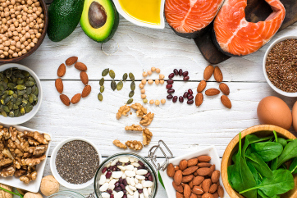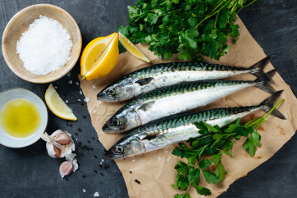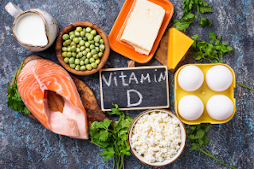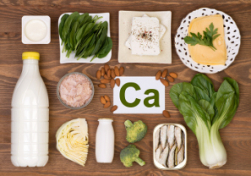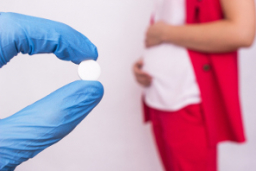Why Omega 3 is a key nutrient in foetal development
DHA improves the development of the baby’s brain
Omega 3 (DHA) is particularly important in the world of obstetrics and paediatrics because it is involved in the neurological development of the foetus and the new-born child. It is an essential nutrient for all pregnant women.
Omega-3 foods for pregnant women
Fish, shellfish and crustaceans are a rich source of protein and very poor in saturated fatty acids. It is also the main source of two types of omega-3, long-chain polyunsaturated fatty acids: docosahexaenoic acid (DHA) and eicosapentaenoic acid (EPA).
These acids can also be obtained from fish oil. Although the human body is capable of producing DHA, the amount it produces is insufficient to meet the needs of pregnancy. Mothers-to-be must therefore supplement their levels with fish or DHA.
Eat fish two or three times a week
The recommended daily intake of omega-3 is 2 g per day during the first 6 months of pregnancy and between 2 and 2.5 g per day in the third trimester and during the breastfeeding period. This is equivalent to eating one serving of fish two to three times a week during pregnancy and breastfeeding.
How much omega-3s to take in pregnancy
Most multivitamins administered in pregnancy contain around 200 mg of omega-3 (DHA) per capsule. Some come from fish and others from algae, so the taste and tolerance of these polyvitamins may vary depending on the origin of their omega-3.
Pregnant women who do not eat the recommended amount of fish can take foods that contain fish oil, algae, which are rich in omega-3s and omega-3-fortified milk or yogurts, in addition to vitamin supplements rich in omega-3s.
What are the benefits of fish and omega-3 during pregnancy?
Neurological and visual development of the baby
Omega-3 (DHA) is particularly important in the world of obstetrics and paediatrics because it helps support the baby’s neurological development.
That is why pregnant women and breastfeeding mothers are encouraged to eat fish, as omega-3 fatty acids contribute to the normal development of brain tissue and the retina.
By doing so, a correct visual and cognitive function in children can be achieved in most cases because DHA is a primary structural component for the grey matter in the brain and for the membranes of the retina. The most important times to eat fish are during the third trimester of pregnancy and the first two years of the child's life.
However, even when the recommended doses of omega-3 are consumed during pregnancy and breastfeeding it is impossible to guarantee a correct cognitive and visual development, because other factors are involved in these processes.
It lowers triglyceride levels in pregnant women
It is known that during pregnancy, fatty acids are mobilised, which results in an increase in plasma triglyceride levels. The role of omega 3 is therefore to help lower these triglyceride levels.
It helps to maintain correct blood pressure levels
Among other things, studies have shown the beneficial effects of omega-3 as it helps maintain normal blood pressure during pregnancy.
List of foods that are rich in omega-3
Foods rich in omega-3 are strongly recommended for pregnant women. Here is a list of fish and seafood, and their omega-3 content expressed in milligrams per 100 grams of fish:
|
FISH |
OMEGA 3 in mg per 100 g of fish |
|
Salmon |
1,200-4,000 |
|
Anchovies, herring |
2,300-2,400 |
|
Mackerel |
1,350-2,100 |
|
Bluefin tuna and albacore |
1,700 |
|
Sardines |
1,100-1,600 |
|
Oysters |
1,550 |
|
Trout |
1,000 |
|
Canned tuna |
1,000 |
|
Mussels |
900 |
|
Squid (calamari) |
750 |
|
Crab |
200-550 |
|
Clams |
200-300 |
|
Scallops |
200 |
|
Hake |
200 |
|
Lobster |
200 |
|
Crayfish |
200 |
|
Shrimp |
100 |






